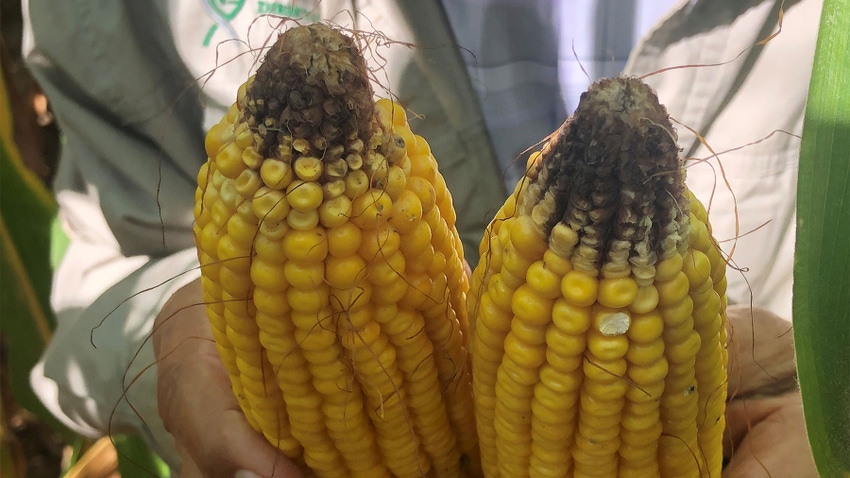
What will the 2023 growing season teach corn growers? It’s too early to draw sound conclusions, but Dave Nanda already sees some trends shaping up from this year.
“It was very dry from mid-May through June, and for some, into early July,” recalls Nanda, director of genetics for Seed Genetics Direct, sponsor of Corn Watch ’23. “Then rains returned, and many areas had ample moisture, with some areas getting too much. Rains continued into mid-August; then many areas went dry again, with some very hot days in late August.
“What we may learn is that dry weather during grain fill can be more detrimental to yield than even a true drought in June. That’s especially true if it isn’t hot during the June dry weather, which it wasn’t, but is hot in late August.”
Why is Nanda thinking this? Because, except for extreme situations when stands are affected by dry weather, corn today does a good job holding on, sending down roots and conserving moisture early. Where rain returned in time for pollination this year, plants appeared to show minimal effects of early drought.
However, he believes that when moisture becomes limiting during grain fill, top yields melt away quickly. Stress during grain fill until black layer can have an impact. However, not all effects from dry weather during grain fill are negative, he adds.
Grain fill impacts
Here is a closer look:
Kernel size. Kernel depth and plumpness can be affected due to stress during grain fill. From observations in the Corn Watch ’23 field, Nanda believes that while kernel depth appeared normal, some kernels didn’t have the plumpness, heaviness and shine you would expect. He noticed differences between the two hybrids that were planted, though, with one hybrid handling this impact much better than the other.
Tip fill. Some ears that appeared headed toward filling to the tip dropped back a couple rows of kernels in length per row, with kernels at the tip aborting late. In some cases, you could see the carcasses of kernels that began forming, still with yellow pigmentation present.
“The plant wants to make as many viable progeny as possible, because it doesn’t know these seeds won’t be planted,” Nanda explains. “So, if it senses it can’t make all that it started, it will sacrifice some to save the others. The last to form at the tip go first.”
Leaf disease. Here is a positive, Nanda says, explaining that in mid-August, gray leaf spot looked like it might really take off. “But since it turned dry, it really didn’t advance much more than before,” he says. “It appears it won’t be a major factor or contribute to these plants shutting down early.”
The Corn Watch ’23 field was sprayed with fungicide at R1. It appeared to be holding gray leaf spot somewhat in check, but until the weather turned dry, Nanda was still seeing more of it than he anticipated.
Ear disease. One year ago, moisture continued until mid-September, aiding grain fill, but also prompting ear molds in fields that were drought-stressed until the end of July.
“We’re not seeing mold issues so far,” Nanda says. “We found about 3% stalk rot, which is normal.”
About the Author(s)
You May Also Like




